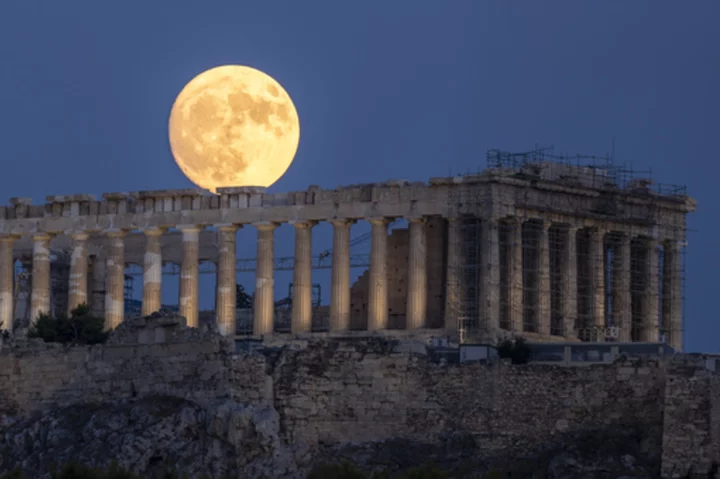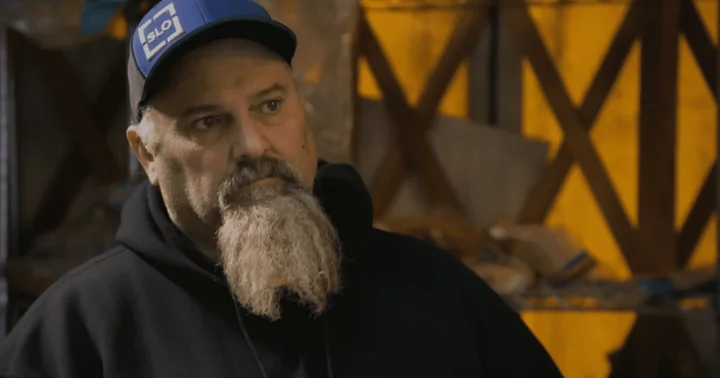ATHENS, Greece (AP) — For decades, Britain and Greece were able to differ, largely politely, over the world's toughest cultural heritage dispute: What's the right place for some of the finest ancient Greek sculptures ever made, which have been displayed in London for more than 200 years but which Greece vocally wants back.
Diplomacy failed when U.K. Prime Minister Rishi Sunak abruptly called off a London meeting scheduled for Tuesday with Greek counterpart Kyriakos Mitsotakis.
Mitsotakis publicly voiced annoyance. Sunak's spokesman linked the snub with the Greek leader's using British television to renew his call, a day earlier, for the 2,500-year-old masterpieces' return.
Here's a look at what the dispute's about, and what could come next.
WHAT ARE THE SCULPTURES — OR IS IT MARBLES?They were carved in 447-432 B.C. to adorn the iconic Parthenon, a temple of the city's patron goddess Athena, on the Acropolis hill.
Free-standing statues filled the triangular pediments that stood above the marble columns on the building's short sides. Just below, sculpted panels stood at intervals along all four sides, while an unbroken strip of relief sculpture — the frieze — depicting a religious procession ran around the outer wall inside the colonnade. They were originally painted in bold colors that have since vanished.
All survived mostly intact for more than 1,000 years, despite war, earthquakes, foreign invasions and the temple's makeover first as a church and then a mosque. But in 1687, the Parthenon was blown up by a besieging Venetian army, and many of the works were lost.
The survivors are now roughly split between the British Museum and the Acropolis Museum in Athens — with little fragments in a handful of other European museums.
London holds 17 pedimental figures, 15 panels and 247 feet (75 meters) of the frieze.
For decades, these were known as the Elgin Marbles, after the Scottish nobleman who started the trouble more than 200 years ago. Now even the British Museum goes by the preferred Greek form — Parthenon Sculptures. Besides, “marbles” lends itself to too many bad puns.
WHY ARE THEY IMPORTANT?Ancient Greek sculpture has been admired for millennia, serving as a key artistic point of reference. For many, Parthenon Sculptures are its most striking example.
They form a coherent group designed and executed by top artists — the Leonardo da Vincis of the day —for a single building project meant to celebrate the height of Athenian glory.
HOW DID THEY END UP IN LONDON?More than a century after the destructive explosion, British ambassador to the Ottoman Empire — of which Athens was still an unwilling subject — Lord Elgin obtained a permit to remove some of the sculptures.
They were shipped to Britain and eventually joined the British Museum's collection in 1816 — five years before the uprising that created an independent Greece.
WHAT'S THE GREEK CASE FOR RESTITUTION?Athens says the works were illegally removed and should join other surviving parts of the group in the purpose-built Acropolis Museum, at the foot of the ancient citadel.
This, the Greek argument runs, will allow them to be seen against the backdrop of the Parthenon, from which all sculptures have been removed for protection from pollution and the elements.
The Greek campaign was loudly championed in the 1980s by Melina Mercouri, an actress and singer then serving as culture minister. It waxed and waned since but was never dropped and has been enthusiastically taken up by Mitsotakis.
In his BBC interview on Sunday that triggered the diplomatic dispute, Mitsotakis compared the current situation to Leonardo's Mona Lisa being cut in half and split between two countries.
WHAT'S THE BRITISH ARGUMENT FOR KEEPING THEM?The British Museum says the sculptures were acquired legally and form an integral part of its display of the world's cultural history.
It says it's open to a loan request, but must be sure that in such an event it would get the works back. So Athens should first acknowledge the institution's legal ownership of the works — which Mitsotakis has ruled out.
Successive U.K. governments have insisted that the sculptures must stay put.
WHAT HAPPENS NOW?The current spat notwithstanding, the British Museum's chairman said earlier this year that he's been in “constructive” talks with Greece on a compromise “win-win” deal.
George Osborne said that he was “reasonably optimistic” about striking a deal, but cautioned that “it may well not come to anything.”
And Greek officials insisted Tuesday that the talks would continue.
Meanwhile, Athens is trying to round up as many of the small fragments in other European museums as it can. That would add pressure on the British Museum, while U.K. public opinion is seen as increasingly backing the Greek demand.
Following an initiative by Pope Francis in January, the Vatican Museums sent back three smaller fragments of sculptures from the Parthenon that they had held for two centuries. A year earlier, a museum in Sicily returned its own small fragment.









